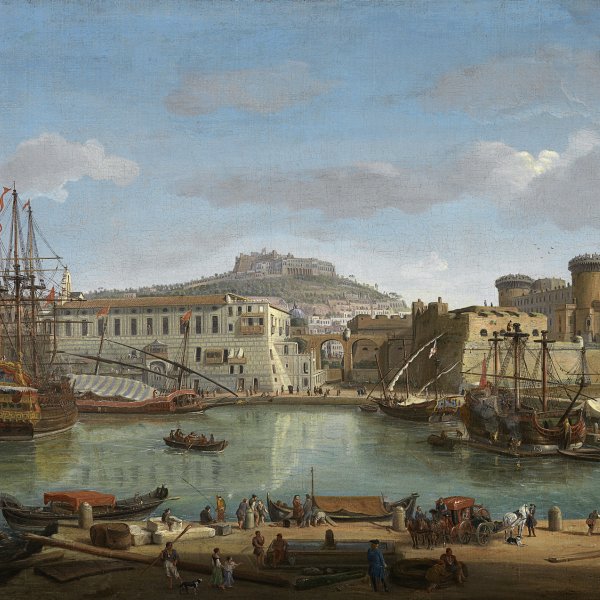Gaspar van Wittel
Amersfoort, 1652/53-Roma, 1736
Known also as Gaspare Vanvitelli and nicknamed "Caspare degli Occhiali, " Gaspar van Wittel's work has been considered an important precedent to urban veduta-painting, which reached its highest point during the Settecento. Trained by the genre painter Mathias Withoos, Van Wittel is documented in Italy since 1675. His collaboration with the engineer Cornelis Meyer is from this year. As a surveyor he illustrated a project for the navigation of the river Tiber; this series of drawings would be a valuable record in the direction of his career.
In the 1680s he became interested in this genre as a subject matter for his works and he executed his first views of the Eternal City (Galleria Nazionale in Rome). His style would be fully formed in the following century, when he made a number of trips through the north of Italy that took him to Bologna, Florence, Verona and Venice, and of which drawings and oils remain (View of Venice from the Island of San Giorgio, Museo del Prado, dated in 1697). In 1700 he visited Naples at the request of the Spanish viceroy, the Duke of Medinaceli. He returned to Rome around 1701 and in 1711 entered San Luca as an Academic-he would occupy a number of posts there until 1721. He died in Rome on 13 September 1736.
In his compositions "of views" a clear interest for transmitting aspects of daily life in the city can be observed, more than for depicting famous corners and squares. His designs, which were based on exact and uncorrected preparatory drawings and on sketches made from nature, were made to fit horizontal formats that allowed the artist to obtain panoramic perspectives and views.
Mar Borobia
In the 1680s he became interested in this genre as a subject matter for his works and he executed his first views of the Eternal City (Galleria Nazionale in Rome). His style would be fully formed in the following century, when he made a number of trips through the north of Italy that took him to Bologna, Florence, Verona and Venice, and of which drawings and oils remain (View of Venice from the Island of San Giorgio, Museo del Prado, dated in 1697). In 1700 he visited Naples at the request of the Spanish viceroy, the Duke of Medinaceli. He returned to Rome around 1701 and in 1711 entered San Luca as an Academic-he would occupy a number of posts there until 1721. He died in Rome on 13 September 1736.
In his compositions "of views" a clear interest for transmitting aspects of daily life in the city can be observed, more than for depicting famous corners and squares. His designs, which were based on exact and uncorrected preparatory drawings and on sketches made from nature, were made to fit horizontal formats that allowed the artist to obtain panoramic perspectives and views.
Mar Borobia





